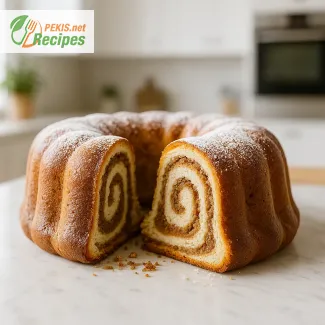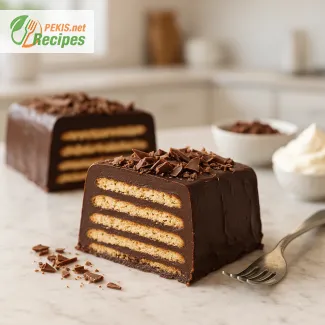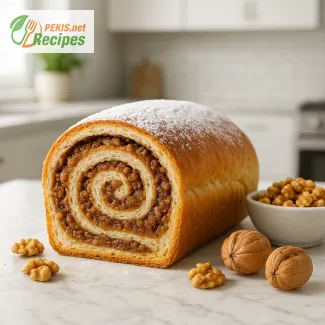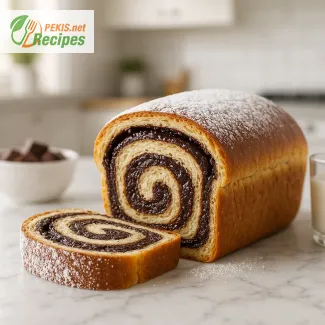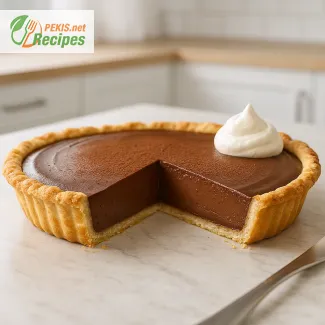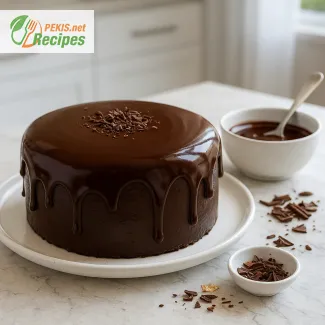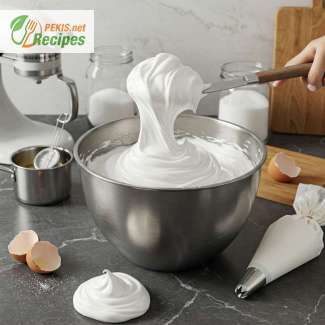
The Art of Making Perfect Italian Meringue
A Timeless Culinary Delight
Italian meringue is a light, airy, and velvety confection that elevates desserts to a whole new level. Unlike its French and Swiss counterparts, this version of meringue is made by whipping egg whites while slowly incorporating a hot sugar syrup, resulting in a silky-smooth texture that holds its shape beautifully. Whether used as a topping for pies, a base for buttercream, or even as a stand-alone treat, Italian meringue is a staple in high-end pastry kitchens worldwide.
With its glossy finish and stable structure, this meringue is not only visually stunning but also incredibly versatile and practical. It doesn’t require further baking, making it an excellent choice for frostings, mousses, and elegant plated desserts. If you’ve ever marveled at the pillowy peaks of a perfectly torched lemon meringue pie or the smooth buttercream on a wedding cake, chances are you’ve encountered the magic of Italian meringue.
Why Italian Meringue Stands Out
Among the various types of meringue, Italian meringue is regarded as the most stable and sophisticated. Its method of preparation ensures that the sugar is fully dissolved, eliminating the risk of graininess often found in other meringue types. The addition of hot sugar syrup partially cooks the egg whites, making it safer to consume without additional baking.
Another key advantage is its resistance to humidity. Unlike French meringue, which can collapse or weep under moisture, Italian meringue maintains its firm structure and glossy texture, making it ideal for professional patisserie creations. This makes it an essential technique for pastry chefs and home bakers alike who want to achieve a flawless finish on cakes, tarts, and mousses.
How to Use Italian Meringue in Desserts
Italian meringue’s silky, marshmallow-like texture lends itself to a variety of applications in the world of desserts. It can be used in:
Frostings and Buttercreams
One of the most popular uses for Italian meringue is in Swiss and Italian meringue buttercreams. By adding softened butter to the meringue, you create an incredibly smooth and light yet rich frosting that’s perfect for cakes and cupcakes. Unlike traditional buttercreams that can feel heavy, this version is lighter, less sweet, and exceptionally smooth.
Meringue-Based Mousses
Italian meringue adds lightness and structure to mousses, making them incredibly airy and smooth. When folded into fruit purées, chocolate, or custard bases, it creates a perfectly balanced texture that melts in the mouth.
Classic Meringue Toppings
From lemon meringue pie to baked Alaska, Italian meringue is a go-to topping for many classic desserts. Its stability allows it to be piped into intricate designs and even lightly torched for a caramelized finish that enhances both flavor and presentation.
Achieving the Perfect Italian Meringue
While making Italian meringue may seem intimidating at first, mastering the technique ensures a fail-proof, professional-quality result every time. The key lies in controlling the temperature of the sugar syrup and whipping the egg whites to the right consistency. Here are some essential tips to guarantee success:
- Use a candy thermometer: The sugar syrup must reach 115-120°C (239-248°F) for the perfect consistency.
- Gradually pour the hot syrup: Slowly streaming it into the whipped egg whites prevents them from scrambling and ensures a smooth, glossy finish.
- Whip until cool: Continue whipping the meringue until it reaches room temperature to achieve the ideal texture and stability.
Elevate Your Desserts with Italian Meringue
Once you’ve mastered Italian meringue, you’ll unlock endless possibilities in the world of baking and pastry. Its smooth texture, remarkable stability, and elegant appearance make it a must-know technique for anyone passionate about dessert making. Whether you’re decorating cakes, perfecting buttercream, or crafting delicate mousses, this classic meringue will take your creations to the next level.
Ready to create your own perfect Italian meringue? Follow the step-by-step recipe and discover just how easy it is to achieve professional-quality results in your own kitchen!
- Prepare the sugar syrup: In a small saucepan, combine water and granulated sugar. Heat over medium heat, stirring gently until the sugar dissolves completely. Once dissolved, stop stirring and let the syrup reach 115-120°C (239-248°F) using a candy thermometer.
- Whip the egg whites: While the syrup is heating, place the egg whites and cream of tartar in a clean mixing bowl. Using a stand mixer or hand mixer, beat on medium speed until soft peaks form.
- Incorporate the syrup: Once the syrup reaches the correct temperature, slowly drizzle it into the whipped egg whites while continuing to beat on medium-high speed. Pour the syrup in a thin, steady stream, avoiding direct contact with the beaters to prevent splattering.
- Whip until cool: Increase the mixer speed to high and continue beating until the mixture becomes thick, glossy, and reaches room temperature (about 5-7 minutes).
- Flavoring (optional): Once cooled, mix in the vanilla extract or any desired flavoring.
- Use immediately: The meringue is now ready for piping, frosting, or topping desserts. It can be lightly torched for caramelization or folded into other preparations like mousses.
Mastering the Art of Italian Meringue: Tips for a Flawless Result
Understanding the Science Behind Italian Meringue
Italian meringue is not just about whipping egg whites and adding sugar—it is a delicate balance of temperature, timing, and technique. Achieving the perfect glossy, stable, and airy texture requires attention to detail. Whether you're making it for buttercream, pie toppings, or delicate pastries, small adjustments can make a significant difference. Understanding the role of each ingredient and technique allows for better control over the final texture and flavor.
Enhancing the Flavor Profile
While traditional Italian meringue is known for its light and sweet flavor, there are ways to enhance and customize it:
Using Different Sugars
Switching from regular granulated sugar to other sweeteners can subtly alter the taste and texture:
- Brown sugar adds a hint of caramel depth, though it may slightly darken the meringue.
- Honey or maple syrup provides a natural sweetness and floral or smoky notes, but should be used in small amounts to prevent excess moisture.
- Powdered sugar dissolves more easily but can slightly reduce the meringue’s stability.
Infusing Flavors
Traditional Italian meringue is often flavored with vanilla extract, but there are other ways to elevate the taste:
- Citrus zest (lemon, orange, lime) gives a refreshing, tangy contrast.
- Espresso powder or cocoa powder can create a deep, sophisticated taste.
- Almond or hazelnut extract adds a nutty complexity.
- Liqueurs (Grand Marnier, Amaretto, or Frangelico) provide a more refined aroma and richness.
Improving Texture and Stability
A stable meringue holds its shape and remains light yet firm for various applications. Here’s how to improve its structure:
Controlling Sugar Syrup Temperature
The temperature of the sugar syrup is crucial. If it's too low, the meringue won’t set properly; if it's too high, it might become overly stiff. The optimal temperature range is 115-120°C (239-248°F). Using a candy thermometer ensures precision.
Adding an Acidic Component
A touch of acid improves stability and helps achieve stiff, glossy peaks:
- Cream of tartar (¼ tsp per 3 egg whites) strengthens the protein network.
- A few drops of lemon juice or white vinegar also work well to stabilize the foam.
Avoiding Common Mistakes
Even experienced bakers can encounter issues when making Italian meringue. Here are the most common mistakes and how to avoid them:
Egg Whites Not Whipping Properly
- Fat contamination: Ensure the mixing bowl and whisk are completely clean and grease-free. Any fat residue will prevent the whites from whipping.
- Cold eggs: Using room-temperature egg whites helps them whip faster and achieve more volume.
- Over-whipping before adding syrup: If egg whites are over-whipped before adding the sugar syrup, the meringue can become grainy or collapse.
Sugar Syrup Issues
- Undissolved sugar: Stir the sugar while heating until it’s fully dissolved, avoiding crystallization.
- Too hot or too cool syrup: Pouring syrup that is too hot may scramble the egg whites, while a syrup that’s too cool won’t properly incorporate.
Loss of Volume
- Not whipping long enough: The meringue must be beaten until completely cool to maintain its structure.
- Excess moisture in the kitchen: Humid environments can cause the meringue to become sticky and deflate.
Healthier Alternatives
For those looking to make a lighter or more nutritious version, here are some healthier alternatives:
Reducing Sugar Content
Italian meringue relies on sugar for structure, but reducing sugar by 10-15% while maintaining the right syrup consistency can create a less sweet version without compromising stability.
Using Natural Sweeteners
- Coconut sugar or monk fruit sweetener can be used instead of white sugar, though they slightly affect the color and taste.
- Stevia or erythritol can replace sugar in part, but using only sugar substitutes may result in a less stable meringue.
Egg White Alternatives
For a vegan-friendly option, aquafaba (chickpea brine) can replace egg whites. While the texture differs slightly, it whips up similarly when combined with sugar syrup.
Why Homemade Italian Meringue is Better
While store-bought meringue products exist, freshly made Italian meringue offers a superior taste, texture, and control over ingredients. Unlike pre-packaged frostings and toppings, homemade versions are:
- Free from artificial preservatives and additives.
- Customizable in terms of sweetness and flavor.
- Fresher and more aromatic, with a delicate texture that store-bought versions lack.
Perfecting Italian Meringue for Different Uses
Depending on the dessert, Italian meringue can be adjusted for different textures and applications:
For Buttercream
- Mix softened butter into cooled Italian meringue for a silky, stable buttercream that is less sweet than traditional frosting.
- Adding a pinch of salt balances sweetness and enhances flavor depth.
For Toppings (Pies, Baked Alaska)
- For a crispy finish, bake or torch the meringue lightly until golden brown.
- To prevent weeping on pies, apply the meringue while the filling is still warm to ensure better adhesion.
For Mousse or Soufflé
- Fold the meringue gently into chocolate or fruit puree to create an airy, smooth texture without deflating the foam.
Mastering Italian meringue is all about precision, patience, and small adjustments that can transform a good meringue into a perfect one. By experimenting with flavors, improving stability, and avoiding common mistakes, you can take your meringue to a professional level. Whether you're using it in buttercream, pies, or light mousses, a well-made Italian meringue is a game-changer in baking.
- Contains: Egg whites
- Does not contain gluten
- Substitutes for allergens: For an egg-free version, aquafaba (chickpea brine) can replace egg whites in a 1:1 ratio, though stability will be slightly different.
- Calcium: 5 mg – Supports bone health
- Iron: 0.1 mg – Essential for oxygen transport
- Magnesium: 2 mg – Helps muscle and nerve function
- Potassium: 50 mg – Maintains electrolyte balance
- Minimal antioxidant properties due to refined sugar and egg whites
- Adding citrus zest or fruit purées can introduce natural antioxidants like vitamin C
